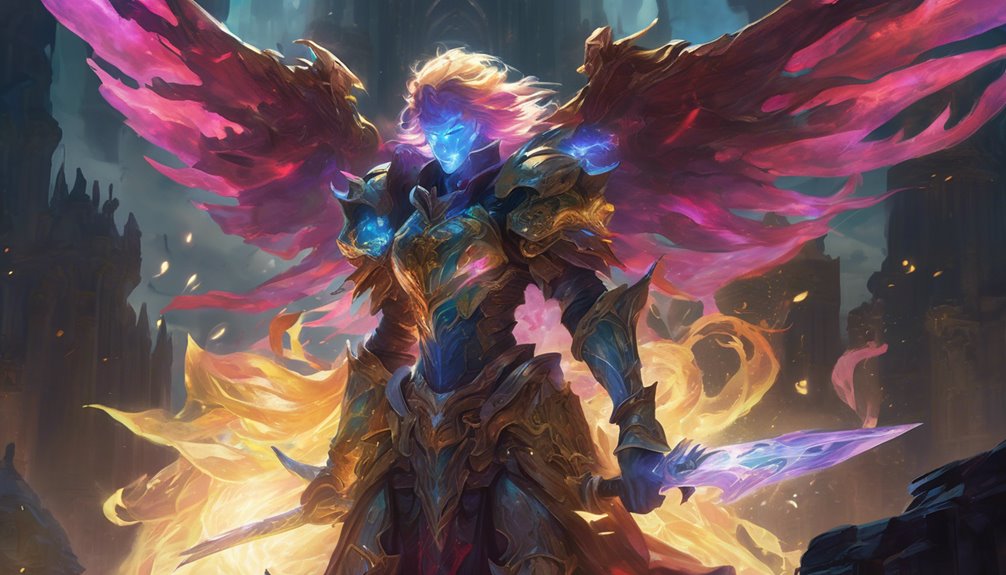Understanding the Currency Types in PoE2
In the realm of Path of Exile 2 (PoE2), currency serves as the lifeblood of your economic interactions.
Understanding currency basics is crucial for effective gameplay. PoE2 features various types of currency items, each with unique functions, such as crafting, trading, or enhancing gear. Familiarize yourself with the most common currencies, like Orbs of Transmutation or Chaos Orbs, as they play pivotal roles in your item economy.
Exchange rates fluctuate based on player interactions, supply and demand dynamics, and market trends. Keeping an eye on these rates can significantly impact your investment strategy. For instance, if you notice that Chaos Orbs are gaining value, it might be wise to stockpile them for future trades. Conversely, if a currency's value is declining, consider selling it off before it drops further. By mastering the currency types and understanding exchange rates, you'll position yourself for economic success in PoE2.
Analyzing Market Trends and Prices
While tracking market trends and prices in PoE2, it’s essential to analyze not just the current values of currency items but also the historical data that informs these fluctuations. Understanding how past events affect current prices can help you anticipate future movements.
- Monitor currency item price trends over weeks or months.
- Identify patterns of market manipulation that may artificially inflate or deflate prices.
- Stay updated on patches or events that influence player behavior and item demand.
Price fluctuations are often driven by supply and demand dynamics, as well as community speculation. By examining these factors, you can better position your investments. Look for anomalies in pricing that suggest market manipulation, which can provide opportunities for profit. With a keen eye on both historical and current data, you’ll be able to make informed decisions and maximize your currency investments.
Strategic Item Flipping for Profit
Understanding market trends and price fluctuations sets the stage for a profitable strategy in item flipping. By focusing on item rarity and trade timing, you can maximize your profits. High-demand items with limited supply often yield the best returns. Monitor the market consistently to identify these opportunities.
Item Rarity Trade Timing
| Common | Early Game |
| Uncommon | Mid Game |
| Rare | End Game |
| Unique | Seasonal Events |
When you spot a valuable item, be ready to act quickly. Flipping items at the right moment can make the difference between loss and profit. Always analyze the item’s current market value against your purchase price to ensure a favorable outcome. By employing these strategies, you'll enhance your currency investments and make more informed decisions in PoE2.
Investing in Crafting Materials
Crafting materials can be a lucrative investment in PoE2, particularly when you recognize their essential role in item enhancement and creation. By understanding crafting strategies and leveraging material scarcity, you can capitalize on the fluctuating market demands.
Consider these key materials for investment:
- Orbs of Alteration: Frequently used for rerolling item properties, their demand remains high.
- Chaos Orbs: Vital for crafting high-value items, their scarcity can drive prices up dramatically.
- Exalted Orbs: Though rare, investing in them can yield substantial returns during crafting booms.
When investing, keep an eye on market trends and upcoming patches that may affect crafting dynamics. By anticipating changes in material availability, you can position yourself to profit from crafting materials that are in high demand. Remember, a keen understanding of the market will enhance your investment strategy and yield better results.
Building a Diverse Currency Portfolio
Investing in crafting materials sets a solid foundation for your overall currency strategy, but diversifying your currency portfolio is equally important. By employing effective currency allocation strategies, you can minimize risk and maximize potential returns. Start by assessing the different types of currencies available in PoE2, such as chaos orbs, exalted orbs, and various crafting currencies.
Utilize portfolio diversification techniques to spread your investments across these currencies, ensuring you aren't overly reliant on one type. For instance, consider allocating a portion of your currency to high-demand items while reserving another for speculative investments in emerging crafting materials.
Monitor market trends and adjust your allocations based on performance, keeping an eye on fluctuating prices. This proactive approach not only protects your investments but also positions you to capitalize on profitable opportunities as they arise, ultimately enhancing your overall success in PoE2.
Frequently Asked Questions
How Can I Avoid Scams While Trading in Poe2?
To avoid scams while trading in PoE2, maintain scam awareness by verifying seller reputations and using official trade channels. Prioritize trading safety by confirming item values and avoiding offers that seem too good to be true.
What Are the Best Tools for Tracking Currency Prices?
For tracking currency prices, use currency calculators and set price alerts. These tools help you monitor fluctuations, enabling informed trading decisions. Staying updated increases your chances of capitalizing on market trends effectively.
Can I Invest Currency in Leagues or Events?
Yes, you can invest currency in leagues or events. By analyzing league currency trends and event rewards, you can maximize your returns. It’s essential to monitor market fluctuations to make informed decisions for optimal investment outcomes.
How Do Currency Exchanges Work in Poe2?
In PoE2, currency exchanges rely on established currency mechanics and the trade economy. You’ll need to understand item value and demand, ensuring you make informed trades that optimize your resources and enhance your gameplay experience.
What Should I Do if Market Prices Crash Suddenly?
If market prices crash suddenly, consider implementing market recovery strategies. Avoid panic selling risks; instead, analyze trends, hold positions, and wait for stabilization. This approach helps to mitigate losses and capitalize on future gains.

